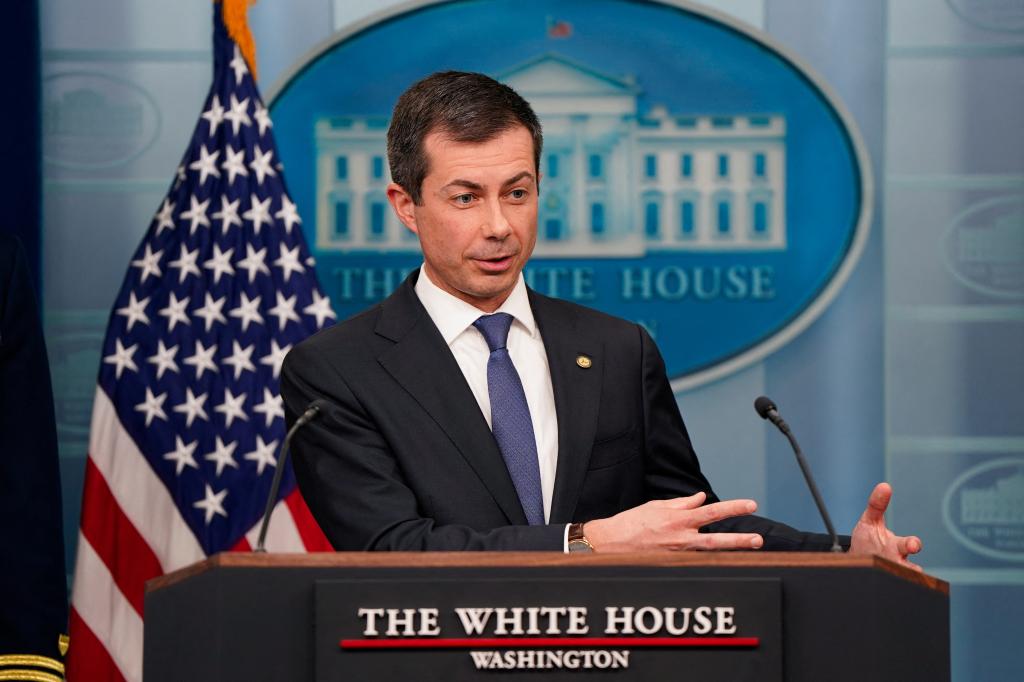Transportation Secretary Pete Buttigieg recently addressed the challenges and complexities involved in replacing the Francis Scott Key Bridge in Baltimore Harbor following its collapse due to a collision with a container ship. The bridge, which took five years to build and opened in 1977, will require significant time and resources to reconstruct. With concerns about the condition of the bridge’s parts and foundational infrastructure, Buttigieg emphasized that the rebuilding process will not be quick or easy. While the exact timeline for replacement is uncertain, Buttigieg highlighted the extensive effort that went into constructing the original bridge as an indicator of what lies ahead.
The closure of the Francis Scott Key Bridge has had significant implications for the Port of Baltimore, the top port for receiving car shipments in the country. Additionally, the port serves as a key hub for coal exports and farm-equipment imports. Economic concerns have arisen due to potential vehicle price increases and disruptions to the flow of goods caused by the halt in marine traffic. The impact has been substantial, with 847,158 cars and light trucks processed at the port last year and approximately 33,000 vehicles traversing the bridge daily before its collapse. The tragic incident also resulted in the loss of six construction workers and raised questions about the events leading to the collision.
The collision between the Dali container ship and the Francis Scott Key Bridge was attributed to a propulsion failure on the vessel, which had a mainly Indian crew. Despite the unexpected steering issue, the crew managed to alert authorities in time to prevent any vehicles from falling into the harbor as the ship struck the bridge. The incident has drawn attention to the need for thorough investigations and safety protocols to prevent future maritime accidents. Buttigieg expressed concerns about the debris removal process and the reopening of the Port of Baltimore, emphasizing the challenges and uncertainties surrounding the recovery efforts.
Buttigieg, who assumed the role of Transportation Secretary after a career in local politics and a presidential campaign, has faced numerous crises during his tenure. From supply chain disruptions during the COVID-19 pandemic to train derailments and aviation safety issues, Buttigieg has been at the forefront of managing challenges in the transportation sector. The collapse of the Francis Scott Key Bridge adds to the list of issues that Buttigieg and his department must address, underscoring the critical role of infrastructure and transportation systems in supporting economic activities and ensuring public safety. As discussions continue on the path forward for the bridge replacement and port operations, Buttigieg remains focused on coordinating efforts to overcome obstacles and restore vital transportation links.
The long-term impact of the Francis Scott Key Bridge collapse extends beyond immediate repair and recovery efforts, highlighting the interconnectedness of transportation networks and economic systems. The incident has underscored the vulnerability of critical infrastructure to unforeseen events and the importance of proactive maintenance and safety measures. As stakeholders assess the repercussions of the bridge closure and work towards a comprehensive solution, collaboration between government agencies, industry leaders, and local communities will be essential. Ensuring the resilience and reliability of transportation infrastructure in the face of challenges such as accidents, natural disasters, and technological failures is a shared responsibility that requires coordinated planning and strategic investments.
In conclusion, the aftermath of the Francis Scott Key Bridge collapse serves as a reminder of the complex and multifaceted nature of modern transportation systems. The incident has prompted reflection on the importance of infrastructure resilience, safety protocols, and emergency response capabilities in safeguarding critical assets and ensuring the uninterrupted flow of goods and services. As efforts to rebuild the bridge and restore operations at the Port of Baltimore progress, the lessons learned from this event will inform future infrastructure planning and risk mitigation strategies. By addressing vulnerabilities and enhancing preparedness, transportation stakeholders can better adapt to the evolving challenges of a dynamic and interconnected global economy.


